 Read the peer reviews for this feature
Read the peer reviews for this feature
Investing in transport infrastructure pays – it’s on public record that for every £1 spent, HM Treasury will eventually get £4 back. Yet rail investment too often seems disconnected with wider economic planning, particularly in respect of housing. The industry could, and should, do a lot better.
Neil Robertson, chief executive of the National Skills Academy for Rail, makes a strong case. “My house is the peak distance from a railway station. That’s ten minutes,” he says. “If it were 20 minutes’ walk away, you could knock £20,000-£50,000 off the market value of my property. Equally, if it were closer than ten minutes, that would reduce its asking price by as much as £10,000. The remarkable thing is that the railway does nothing to leverage that.”
Being within comfortable reach of a railway station is a big selling point. Ask any estate agent. But, at the vast majority of stations, neither Network Rail nor train operators take advantage of it, beyond collecting the fares.
Dr Simon Blainey at the University of Southampton has measured the effect of building a new station on house prices, and he confirms it has a significant impact on property prices within the immediate vicinity.
“Opening a local station leads to a 7.7% increase,” he says. “We looked at prices before and after the opening of 15 schemes, measured against an equal number of control areas.”
But Blainey says linking rail investment to wider planning policy has to be done at an early stage to be effective; too often rail improvements have followed other development.
“The rail operator or owner rarely gets involved in property development,” he says. “Network Rail has tended just to sell the land for others to make money.
“When a new site is developed, often the railway station follows a proven need from housing or employment that is already developed. This means it comes after people’s travel patterns have formed. There is quite a lot of evidence that the best time to influence people to change mode is when they are undergoing other major change in their lives: a new job or a new house. You need to focus on the points of disruption in their lives.”
Blainey says that if the station is near where people are moving to, they consider it as part of wider lifestyle change. Whereas if a railway station comes along after people are already happily driving to work by car, they are less likely to reconsider.
Most railway planning is done at national level. Most housing or employment location decisions are taken either locally or regionally. In consequence, the two have often not aligned.
“The best example is the contribution that developers are making to the extension of the Northern Line in London at Nine Elms and Battersea,” says Neil Robertson. “It’s unbelievable. You need to see it. Millions of cranes, all the way from Battersea Power Station back towards Vauxhall, all being redeveloped into huge blocks of flats.”
In April, two boring machines began to dig 3.2km (two-mile) tunnels to extend the Northern Line from Kennington. The £1.2 billion project is due for completion in 2020.
“The developers have paid partly for that, which is very astute of Transport for London. It has turned a corner for this kind of activity. The local authority will get that money back from the extra homeowners who will pay council tax,” Robertson says. “But elsewhere there is no proper plan, no best practice yet; no proper science to it.”
Reading’s Green Park Station is an example of that. You will not have seen it on any railway map, as it does not exist. Yet it has been planned for 15 years.
In July the Government announced it would contribute £2.3 million to the £16m cost. It was intended to serve a new industrial park and 1,500 homes built in an area bordered by the Reading-Basingstoke railway line, the M4 and the A33, the main road into Reading from the south. Reading Borough Council wanted the station ready for the opening of the business park in 1999. Now, 6,500 people work there, and the station is due to open by the end of this decade.
“We were able to work closely with Network Rail for Reading station because it was a £1 billion scheme of national importance, and the Department for Transport was cracking the whip,” explains Tony Page, Reading’s Labour lead councillor for strategic planning, environment and transport.
Green Park is not in that comfortable category. It sits between two railway regions. The western platform is in West Berkshire, the eastern platform in Reading. The council boundary is between the tracks.
“We had two identical planning applications.” says Page. “The fragmented nature of the planning system has worked against us. Network Rail has not been obstructive or unhelpful, but it is a prisoner of its own structure. It is just not set up to work with local authorities.”
The latest Government funding will ensure the station has longer platforms and canopies - £9.15m will come from the Local Enterprise Partnership, £4.6m will come from contributions by developers of the business park.
“It is a major downside of our planning system that we are not able to put in place all the infrastructure in advance, and then get it funded as areas of land are developed in the private sector,” Page complains. “We are always playing catch-up. It’s no wonder the public is sceptical about promises of improved infrastructure, because we’re always told to build the houses first.
“We have established a very good bus service, called Green Wave, with a service to the town centre every 5-6 minutes. We are building a bus mass rapid transit linking a park and ride south of the M4 motorway, Green Park and the centre, because the railway will only be able to deliver a small amount of the capacity we need.”
The intention was for Green Park to be served by the new electric trains Reading had been promised. With increased acceleration, they would have stopped at Green Park within the current two-train half-hourly shuttle pattern between Reading and Basingstoke.
“The Hendy Review made that collapse,” says Page. “So, the Department for Transport has now agreed to fund a third DMU to deliver the same level of service that would have come with two electric trains. But the buses will always deliver more people to Green Park until such time as the railway is electrified to deliver an improved frequency.
“What we planned when we improved Reading’s largest business park, with its football stadium, conference centre, school and health centre will not now materialise. So we have to turn to other means of transport.”
On a wider scale, Neil Robertson remains positive: “We’ve just done a piece of work for the Treasury which really showed the potential for linking rail with other infrastructure. Not just housing. Obviously new housing needs good transport, but that mutual dependency is not planned in any kind of systemic way.”
Robertson suggests Network Rail’s devolution of control to Route level will help, as rail managers form relationships with regional decision makers.
“That’s why the Manchester question around Transport for the North is so sharp just now. The car-use pattern there is unsustainable,” he says. “TfN is a partnership between local authorities and local economic interests, so it can really take the wider economic view, and use that to press the Government for greater investment, particularly in rail infrastructure.”
Dr Blainey contrasts that with the example of Sheffield. “When the Supertram first opened, demand predictions were based upon a lot of people living in some fairly old council estates near stations. Then those estates were redeveloped. More people bought cars and demand disappeared. There was a lack of integration between general land use planning and planning on the railway.
“Where there is more co-ordination with new housing and new stations, there is often not much interaction between the housing developer and Network Rail. They seem to have forgotten the experience of the Metropolitan Line creating Metroland early in the twentieth century, using the railway to develop housing in north west London and into Buckinghamshire.”
Paul Harwood, until recently Network Rail’s director of strategy and planning in the south of England, offers a more positive case study - Cranbrook station on the West of England line. It’s to the east of Pinhoe on the approach to Exeter, near the airport.
“The station went in pretty much at the same time as new housing. That’s a success story,” says Harwood. “Because the two happened together, a significant number of people chose to use it. They moved in with the expectation that they could get the train to work, at a point where traffic around the M5 motorway junction was becoming increasingly congested. Effective early engagement with the local authorities is a key part of our route planning.”
Today both rented and mortgaged housing in London is increasingly stretching out of range of ordinary working people on average wages. If rail is to play a fuller part in the capital’s expanding economy, it has to provide affordable travel to people on normal incomes over increasingly large distances, as workers are led to search for homes further from their places of work.
“I would argue that investment in rail is competitive compared with what you get for your money in other modes,” says Robertson. “Rail is one of the best returns on investment for the Treasury. So is energy. If you do it well, the Treasury gets back £4 for every £1 spent. Even if you do it badly, you still get half that.
“But it only works if the investment employs more people. It doesn’t matter what language those people speak, but they have to be in the UK. Crucially they have to spend their VAT here.”
Robertson says that transport in London benefits from the housing market dynamics but he has mixed feelings about Crossrail 2.
“It has a wonderful business case. That is not in dispute,” he says. “But when you look at the plan, it is not specific enough in terms of the wider economic and social benefits, including housing. It is not clear enough how they can be delivered in terms of GDP.”
Paul Harwood is now director of route sponsorship for Network Rail’s South East Route.
“The whole Thameslink Programme is inherently tied to the growth of housing on the key routes,” he says. “Although the core argument has always been about relieving congestion on the Underground.
“It was not motivated by the housing growth; that was more a consequence of what we were doing. The idea was developed in the 1990s. It was once called Thameslink 2000 as that was the original target date for completion. Since then the route has seen remorseless growth further and further out. Horsham, Crawley, and Three Bridges are still seeing new housing. It’s driven by London property prices.
“We are trying to work with Highways England to understand which areas are better served by road and which are better by rail. We have a habit, I think, of not coordinating. It comes back to rail’s USP: significant volumes over longer distances.
“Local authorities want more stations, but that has an impact on journey times, undermining the USP. Local authorities are used to dealing in roads; it is their option of choice. They don’t sort out the whole-system issues; they sort out the road problem associated with a housing development, and leave the resulting traffic to disappear into the system. It’s not their problem.”
Harwood says Network Rail’s devolved structure is promoting better links with local authorities. He suggests the recent Kent route strategy is the best Network Rail has produced. As well as taking national demand forecasting of housing and employment, it taps into local projections.
“On the railway, our constraint points are very often nowhere near where development is taking place. We have to get engagement across a wider area. Can we persuade a developer in Horsham or Lewes to help pay for a new junction near East Croydon, which his homebuyers will help to block up? It’s unlikely. The constraints we face are essentially not the concern of councils developing housing many miles away.”
Railways tend to have good links with councils but turning that into progress at the right time can be a challenge. The railway can take a long time to reach decisions. And it relies on people putting money in early.
“If you put in a station before the development is started, who is going to make the investment?” Harwood asks. “The local authorities are dependent on the developer, through what’s called a Section 106 agreement, or the community infrastructure levy. But there’s not a financial flow at that early stage to facilitate the work.”
Robertson believes it’s essential to ensure that in delivering infrastructure, new jobs are created, too. “Ultimately these are the people who will buy the new housing. If we don’t create jobs in the UK, we will deliver wage inflation because of a skills shortage.
“The Department for Transport doesn’t really understand this. It gets a budget and considers how to spend it on much narrower economics. It doesn’t for a minute think about the wider social impact in any profound way. DfT people would say it’s not their job to do so.
“But actually it is a vital part of what they do. We are helping them to buy into this. They can recruit people from Peterborough or Newcastle or other places outside of London to be the new maintenance staff. Train them up. Suddenly you start to make a case for wider economic potential. Justifying new infrastructure through creating jobs is low-hanging fruit.
“With Transport for the North breathing down its neck over Crossrail 2 investment, the Government really needs to show how this works for the country as a whole.”
That’s not easy. Manchester Mayor Andy Burnham has led northern political leaders of all colours to demand London redresses “long-standing imbalances in transport funding.” George Osborne, the former Chancellor, had promised an electric high-speed line between Leeds, Manchester and Sheffield that would halve journey times. Chris Grayling backed the £30 billion Crossrail 2 but moved away from a commitment to electrify Liverpool to Newcastle.
The think tank IPPR North says journey speeds are half those in the south east, adding that the region would have received £59 billion more over the past decade if it had been funded at London levels.
“Before, DfT didn’t understand the job creation,” says Robertson. “It didn’t even ask the questions. These are transport geeks, not economists. Has central Government got better at this? Only slightly. The National Infrastructure Commission should be driving all this and it’s not.
“We’ve got quite bad wage inflation on the railway. That’s because we have skills shortages. It is starting to come together: look at the Secretary of State’s guidance to the ORR published in July. Paragraph 13: ‘Infrastructure must be procured in a way that gives the supply chain certainty so that they invest in skills.’ I’ve got the data to make that work. It’s part of the story now.”
Robertson believes Network Rail missed an opportunity during the rebuilding of Reading station. “It should have built shops above the platforms, but failed to leverage untapped commercial potential,” he says. “The local council, on the other hand, planned its entire town centre regeneration around the improved rail connection, and in particular the promise of future direct services into Heathrow airport.
“It’s not being done scientifically yet; it’s being done by enthusiastic amateurs. Maybe that is grossly unfair to some excellent examples of co-working, but it has been down to the common sense of a few wise people,” says Robertson. “It’s not like we have an established way to get more money into the railway from new developments.”
Why does this matter to the National Skills Academy for Rail, an organisation concerned primarily with training?
For the rail industry to really embrace its supply chain at a practical level, Robertson says it first needs to understand where it sits in the wider economic arguments, not just the technicalities of railway engineering.
“We are a membership organisation. Our members are selling the potential to drive economic growth, and housing is a key component of that. We can put a value on it. This is about making our case better, because better training leads to economic growth,” he says.
“Local authorities understand very well the social contribution developers can make for new schools, new roads, etc. But they haven’t extended that to railways just yet. Perhaps that’s because they’ve had to deal with Network Rail, which has behaved in a monolithic and difficult way, and been more focused on other things.
“The case is easy to make. It is so obvious that rail helps solve housing problems. Either by getting people to jobs that are further away, or by improving the value of houses.”

The case for rail investment is irresistible… or at least it should be. When aligned with other infrastructure it builds communities, fuels economic growth and creates jobs, in turn generating revenue that can be pumped right back into
further investments in technology, infrastructure and skills that support sustainable growth. Of course, it’s not as straightforward as that - integrated infrastructure investment is hamstrung by a fragmented planning process and sometimes serious misalignment between local and national interests.
With Network Rail’s reclassification effectively preventing it from further borrowing, the need to attract private investment is stronger than ever. While its move to open up a pipeline of project opportunities to third parties will find new revenue streams, there are barriers that must be removed first, the most significant of which is risk and uncertainty.
Rail needs to offer potential investors returns that carry an acceptable level of risk and a good degree of certainty. This sounds obvious, but an endemic lack of co-ordination between developers, local authorities and infrastructure providers has led to inadequate transport solutions that fail to address the needs of users and fall short of their development potential. Reading station’s success was driven by a strong local voice that was heard by regional bodies and encouraged national bodies to engage and understand the business case - creating a forum for the local and regional voice in planning and development is critical.
To create conditions that will enable infrastructure investment to thrive we must first look at challenging our planning system to be one that reduces risk.
Let’s take a new transport hub as an example. Complete with multi-modal interchange for passengers and goods, this hub brings with it an attractive opportunity to create a mega-development around it, one that comprises homes, retail and leisure facilities - regeneration, jobs and economic growth.
However, the existing consenting mechanisms for securing the powers needed to achieve this (Transport and Works Act orders, Development Consent Orders) are slow and rather blunt instruments focused on infrastructure rather than the related development opportunity which traditionally follows later in the programme. This limits certainty for investors that planning conditions will be favourable enough for them to invest with confidence, and defers an uncertain contribution to the cost of the infrastructure to a later point for the promoter. We need to find a new mechanism that balances protective powers against the need for economic progress, and it must be agile!
For private investment in rail to thrive, we also need to change the culture within our rail industry to one that instils confidence among investors that their risks are manageable. This is not going to happen overnight, but it can be achieved if the industry works together and focuses its efforts on addressing three key factors:
Protect the assets: infrastructure owners need to know that their assets will remain safe and be protected from potential developments, such as adjacent/oversight developments or new technology. But asset protection and assurance is a function often fraught with uncertainty and inconsistency for a private developer or investor, so a transparent approach that facilitates (rather than frustrates) is a must.
Avoid misunderstanding: Investment sometimes fails because the original estimate on potential returns was exaggerated. Infrastructure owners and those wishing to develop over and around fixed links must reach a realistic and joint appraisal of value. Both public and private sector players need to understand the business models belonging to their counterparts. We must also be realistic about where land values make oversight development viable, and equally where the railway is something to enable growth around a station. New ways must be found to link the opportunity created by the railway with the value created around it.
Work towards a common goal: For many private sector developments, particularly those attached to major transport hubs that feature multiple transport organisations and stakeholders, there can be many parties all pulling in different directions. Failure to act in concert is to the detriment of everyone’s investment when what is needed is an integrated solution. Failure to collaborate means wasted time and energy, and a wasted opportunity to show private investors that rail is worth another look.
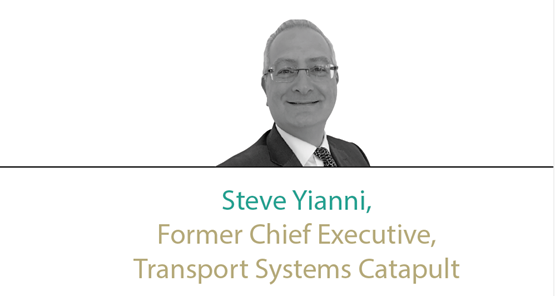
Milton Keynes is celebrating 50 years since its formation via the Milton Keynes Development Corporation (MKDC) in 1967. It is a good example of a planned infrastructure system, incorporating all elements required for a well-functioning city, servicing the needs of its society.
MK was planned as a London overspill, with excellent transport connections via road and rail, and fast trains to London transporting people the 50 miles from MK Central (opened in 1982) to London Euston in just 30 minutes. The transport connections have been critical to the successful growth of the MK conurbation - rail passenger usage journeys now exceed eight million at MK stations, from its urban borough of 250,000 people, which represents a five-fold increase in population since the 1960s.
Transport planning has been (and continues to be) a key consideration for the unitary authority of Milton Keynes Council. However, the real success comes from the total system thinking, providing needs for the population and business alike. Housing and energy provision, together with the effective use of land, has enabled the city to continue to grow - even now, 50 years on, land is available for further business and residential expansion.
So successful has been the business growth that the authorities - MKDC, and now MK Council and the Parks Trust - have been major beneficiaries of the increased land values. MK is now a standalone economic power house, which has been noted by the National Infrastructure Commission (NIC), which sees the development of the Cambridge-MK-Oxford corridor as one of the key national UK priorities to develop further. The NIC is considering transport arteries and connections of road and rail, housing, water and energy provision for this economic belt based on high value-added manufacturing and services.
Despite the success of Milton Keynes, joined-up infrastructure systems thinking is lacking in the UK, and MK is a relatively rare example of what can be achieved. The current UK infrastructure investment programme is huge, and with the Department for Transport being the largest capital spending department across central government, transport infrastructure investment is in need of more systems thinking to better serve the needs of society. The NIC only has recommendation powers, so Government departments do not need to follow its advice. Examples of inconsistencies across Government departments and central government policy are surprisingly frequent, which highlights the need for a body such as the NIC to have more powers to force integrated systems thinking. Regulators also need to work together more closely to gain best effect for the benefits of consumers and society.
As an example, to meet the needs of the Paris Climate Change commitments, decarbonisation is a policy need. As such, electrification of transport is an appropriate approach, provided the UK has a sensible mix of non-fossil fuel power generation.
The UK Government announcement in July 2017 to abolish diesel and petrol cars by 2040 is seen as a welcome intervention. This was backed up by significant funding for the research and development of battery technologies as part of the Industrial Strategy Challenge Fund, which is also consistent with this direction.
However, in the same month, the Government also announced the cancellation of major parts of the rail electrification programme, affecting the Midland and Great Western Main Lines and northern routes, while also announcing new hybrid diesel electric bi-mode rolling stock, which will have a lifespan significantly beyond the 2040 timeline for the abolition of petrol and diesel cars.
This was blamed on cost overruns for electrification, so why is the regulator not investigating why the costs have overrun so much? To take a whole systems view would review the design, safety, procurement, delivery, maintenance and operating costs for a whole-life cost assessment. This seems not to have been done sufficiently to challenge the cost overruns of the initial installation of the overhead wire systems.
This example highlights another Government inconsistency in its promotion of a rebalanced economy in a post-Brexit world, where the UK needs to become less dependent on London and the South East and promotes investment in other regions of the UK. However, also in July 2017, the Government announced support for Crossrail 2 in London, while in other regions electrification of the Midland Main Line north of Kettering, and west of Cardiff will not happen. Even Brunel’s Bristol Temple Meads station will now not be electrified as part of the cuts announced, with the route to Cardiff being serviced by electrification via Bristol Parkway. These mixed messages from central Government confuse the public and weaken investor confidence in the UK.
It is time for the UK to be bold and further expand electrification of the railways, an issue on which the UK lags significantly behind its European counterparts. The opportunity exists to apply systems thinking across the transport modes, with efficiencies and consumer benefits in deploying large-scale electrification of road and rail services.
Just think of how many electric cars will be parked at railway stations in the future. Consumers will want charging facilities. The parked cars could even be used as short-term energy reservoirs to feed into the railway system, mitigating the impact of rail electrical peak loading, and still be fully charged for consumers returning to their cars after their journeys. Smart energy management systems could be deployed to provide benefits to rail, consumers and the environment. The UK has the opportunity to lead the world, facilitated by well-thought through and integrated infrastructure systems investments.
Even more integrated thinking via the application of “Mobility as a Service” - providing consumers with personalised, relevant and real-time journey options through smart devices - is another technology-enabled area where the UK could take a lead. This also needs joined-up systems thinking, bringing together information technology, communications, transport operators (across the modes) and consumers to provide an improved customer experience and society with a more efficient, sustainable and cost-effective mobility system. A pre-requisite to realise this is collaboration across central and local government, regulators, industries and consumer groups.

Decisions about transport infrastructure shape the type of housing and settlement patterns that we end up with. This can vary from car-based, polluting, sprawling and isolated suburban extensions to sustainable, people-focused,
inclusive and well-planned communities. The former locks
people into unsustainable travel habits and creates long-term costs. The latter provides long-term benefits which range from better public health to cleaner air and increased productivity.
Rail projects can support sustainable development by opening up land for housing and employment activity. When done correctly, it gets people out of their cars and helps to tackle the serious problems of congestion and air pollution in many towns and cities. Improved transport connectivity attracts inward investment, and development around railway stations can act as a catalyst for wider regeneration.
Until recently, there has been insufficient discussion on how transport infrastructure can help to solve the various housing crises that are occurring across the country. Our research shows that in many English city-regions, the majority of new housing development is not being developed around new or existing rail connections. While bus networks can play an important role, we run the risk of creating new car-dependent communities which are not sustainable in the long-term.
The challenge to overcome is that the benefits from well-planned transport infrastructure investment occur over the medium to long term, and can be difficult to quantify. This can result in infrastructure projects that could act as catalysts for sustainable growth not being approved. Meanwhile, the negative impacts of ‘quick-win’ schemes are often downplayed, such as capacity increases on the road network which generate additional traffic.
The Department for Transport has made some positive steps towards improving its appraisal process, but more needs to be done. To realise these wider benefits, we need to link up transport and spatial planning at a range of scales.
This is starting to happen. New bodies such as Transport for the North can take a regional approach to increasing rail capacity and coverage, making it the natural choice for inter-city travel. Combined authorities can use strategic planning tools such as Local Development Orders and Development Corporations to co-ordinate new transport infrastructure with development, and to capture the land value uplift that results from public investments in improved connectivity.
At the local level, proactive planning departments can work with transport professionals to create great places around railway stations.
Examples from across the country show how planners can help to make the strategic case for transport investment, from the Nottingham tram extension to Salford’s MediaCity, and from London’s Barking Riverside to the Cranbrook development in Devon. By working together with the industry, professional bodies such as ourselves are showing that with good strategic planning, transport infrastructure pays.
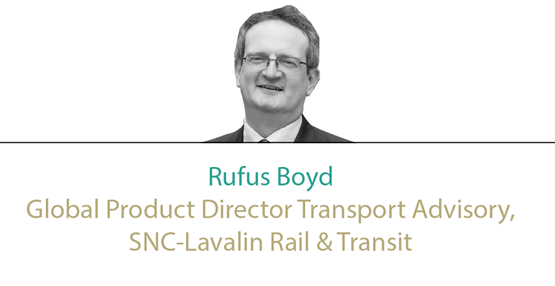
It is axiomatic that integration of transport and housing (and its infrastructure) would lead to better socio-economic outcomes. Paul Clifton has drawn on some well-known (Battersea and ‘Metroland’) and some less well-known (Reading’s Green Park)
examples to illustrate the problem/opportunity. The challenge is how much integration, by whom, and in what order. The more planning bureaucracy applied to a process, the slower it becomes and the less appetite there is from the private sector to participate (with an impact on funding). Balance, as ever, is everything.
Public policy - and the bargaining between local planners and national Government - has pointed additional housing to capacity-enhanced railways as at Ashford (HS1), Milton Keynes (WCML upgrade) and Crawley/Horsham (Thameslink). Even once quiet towns such as Market Harborough, where I was a station manager 25 years ago, have thrived on better frequencies and speeds. What the Reading Green Park example shows is the limits of the rail system and the substantial costs of delivering even minor upgrades when relieving constraints such as signalling and rolling stock cause step-functions in cost. This is a key and recurring theme that complicates planning, rather than being a fault of the system.
Some years ago I was involved in the sale of track access over the West London Line. A sub-decision was how many new stations would be built and where, with what impact upon capacity. Planning the prioritisation between local government and the railways ensured that the focus was upon Imperial Wharf (housing) and Shepherds Bush (retail). The rail plan and the local plan came together but, as is often the case, this was in the context of the special case of London. So how do we achieve this outside of London?
Paul Harwood offers the positive case of Cranbrook, which is part of a wider effort by Devon County Council (always forward-looking on transport) to create a rail hub at Exeter and push sustainable development to current and new stations served by cross-city services. Some of these developments have taken time to get off the ground, which may be further evidence of system sclerosis of the type Paul Clifton sees everywhere, but potentially evidence of high rail costs.
Paul Harwood also addresses new station funding. He is surely right that developers will resist funding faraway network enhancements, although local government can be more enlightened - think Wales championing a Reading upgrade. A funder I know has complained that the railways just didn’t get developers, who like things simple: “Tell me how much money you want and we’ll tell you if we can afford it.”
High costs and knitting multiple funding sources slow progress. Adding more complexity and planning bureaucracy will in turn make smaller Green Park-style schemes unattractive despite the business case. Some simple innovation would help - council tax rates have not kept pace with house price inflation, making them a poor way of leveraging value from new houses.
Finally, while the Metropolitan Railway was a good example of a transport scheme leveraging in housing investment, it was not (by modern standards) a great example of planning co-ordination. The densities were light and the sprawl considerable, and within 60 years we would have probably chosen a different path more aligned to current Transit Orientated Development.
So doing the right thing matters as much as how it’s done, and it is this (above all) that may be causing people to move cautiously.

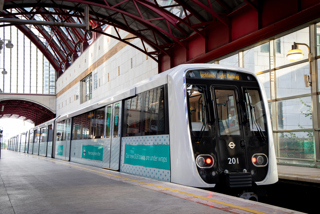
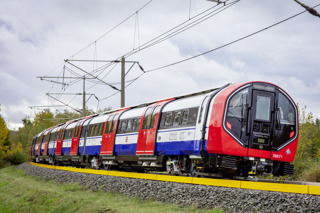
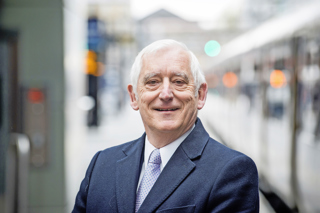
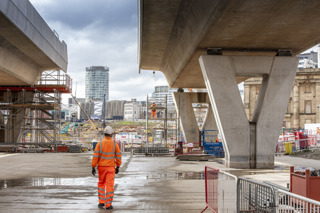
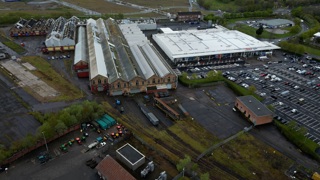


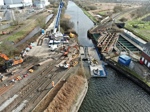








Login to comment
Comments
No comments have been made yet.